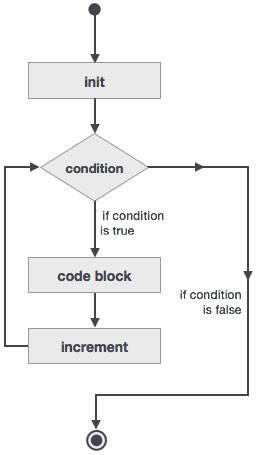do循环
do循环结构允许迭代地执行语句或一系列语句,而给定条件为真。
语法 (Syntax)
do循环的一般形式是 -
do var = start, stop [,step]
! statement(s)
…
end do
Where,
循环变量var应该是一个整数
start是初始值
stop是最终值
step是增量,如果省略,则变量var增加1
例如 (For example)
! compute factorials
do n = 1, 10
nfact = nfact * n
! printing the value of n and its factorial
print*, n, " ", nfact
end do
流程图 (Flow Diagram)
以下是do循环结构的控制流程 -
首先执行初始步骤,并且仅执行一次。 此步骤允许您声明和初始化任何循环控制变量。 在我们的例子中,变量var用值start初始化。
接下来,评估条件。 如果为真,则执行循环体。 如果为false,则循环体不会执行,控制流会在循环之后跳转到下一个语句。 在我们的例子中,条件是变量var达到其最终值stop。
在循环体执行之后,控制流跳回到增量语句。 此语句允许您更新循环控制变量var。
现在再次评估该条件。 如果为真,则循环执行并且过程自身重复(循环体,然后递增步骤,然后再次调节)。 条件变为false后,循环终止。

例子1 (Example 1)
此示例打印数字11到20 -
program printNum
implicit none
! define variables
integer :: n
do n = 11, 20
! printing the value of n
print*, n
end do
end program printNum
编译并执行上述代码时,会产生以下结果 -
11
12
13
14
15
16
17
18
19
20
例子2 (Example 2)
该程序计算数字1到10的阶乘 -
program factorial
implicit none
! define variables
integer :: nfact = 1
integer :: n
! compute factorials
do n = 1, 10
nfact = nfact * n
! print values
print*, n, " ", nfact
end do
end program factorial
编译并执行上述代码时,会产生以下结果 -
1 1
2 2
3 6
4 24
5 120
6 720
7 5040
8 40320
9 362880
10 3628800
